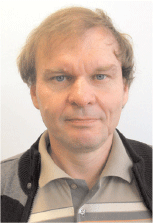Coal microstructure changes due to water absorption and CO2 injection
Yihuai Zhang A , Mohammad Sarmadivaleh B , Ahmed Barifcani A , Maxim Lebedev A and Stefan Iglauer AA Department of Petroleum Engineering, Curtin University.
B Australian Resource Research Centre, Curtin University.
The APPEA Journal 56(2) 593-593 https://doi.org/10.1071/AJ15099
Published: 2016
Abstract
Value from deep coal seams—too deep for mining—can nowadays be gained through natural gas production, so-called coal bed methane (CBM) recovery. To enhance such methane production (ECBM), CO2 can be injected into such coal seams—that are also a potential sink for CO2—to mitigate climate change. During this process CO2 is absorbed into the coal matrix, which can lead to a dramatic porosity and permeability change. The underlying changes in coal microstructure—despite their obvious importance for permeability and production—are only poorly understood. The authors thus imaged coal core plugs at high spatial resolution (3.4 μm) in 3D with an X-ray micro-computed tomography. Medium rank coal plugs were cut and imaged at dry and brine saturated state, and after CO2 injection. During brine flooding the authors observed a clear and significant change in microstructure morphology; while the solid volume clearly expanded significantly (coal swelling), cleats closed and permeability was reduced dramatically.

Yihuai Zhang is a Master of Philosophy student in the Department of Petroleum Engineering, Curtin University (2015–present), supervised by Dr Stefan Iglauer. He received his bachelor’s degree from China University of Petroleum (Beijing). Yihuai’s research interests range from coal bed methane recovery to core analysis, rock mechanics, CO2 storage, multi-phase flow and EOR. His research projects are now focusing on CO2 storage in carbonate reservoirs and CO2-ECBM. |

Mohammad Sarmadivaleh is a lecturer at the Department of Petroleum Engineering, Curtin University, and leads the Curtin Petroleum Geomechanics Group (CPGG). Mohammad received his PhD from Curtin University in numerical and experimental studies on hydraulic fracturing in 2012. Mohammad’s research interests include hydraulic fracturing, sanding, geomechanical reservoir modelling, and carbon dioxide sequestration studies. Presently, he supervises 10 HDR students and participates in academic and industrial research projects. |

Ahmed Barifcani received his bachelor degree, masters and PhD in chemical engineering from University of Birmingham, UK. He is Associate Professor at Curtin University. He is also Fellow member of IChemE (FIChemE) and CSi of the Institution of Chemical Engineers. Ahmed has more than 30 years of industrial experience in operation, design, engineering, construction and project management in the fields of oil refining, gas processing, LNG and petrochemicals. He has 10 years’ experience at Curtin University in doing research on CO2 capture, hydrates flow assurance, gas separation processes and MEG recovery research. He is also teaching undergraduate courses in petroleum engineering and supervising chemical engineering design and research projects. Additionally, Ahmed is also supervising PhD students in chemical engineering, petroleum engineering and at the corrosion centre. |

Maxim Lebedev is an Associate Professor at Curtin University, Perth, Australia, at the Department of Exploration Geophysics. He obtained a PhD in physics 1990 from the Moscow Institute of Physics and Technology in Russia. He worked for a decade as a physicist at the High Energy Research Centre in Russia, and for eight years as a material scientist at the National Institute of Advanced Industrial Science and Technology in Japan. In 2007 Maxim joined Curtin University and became the leader of an experimental group in rock physics. His research is focused on the properties of subsurface reservoir rocks and minerals. |

Stefan Iglauer is an Associate Professor at Curtin University, Perth, Australia, in the Department of Petroleum Engineering. His research interests are in coal, CO2 geo-storage and (enhanced) oil/gas recovery with a particular focus on pore-scale processes. Stefan has authored more than 80 technical publications, and has a PhD degree in material science from Oxford Brookes University (UK) as well as a MSc degree in chemistry from the University of Paderborn (Germany). |
References
Blunt, M.J., Bijeljic, B., Dong, H., Gharbi, O., Iglauer, S., Mostaghimi, P., Paluszny, A., and Pentland, C. (2013). Pore-scale imaging and modelling. Advances in Water Resources 51, 197–216.Buades, A., Coll, B. and Morel, J.-M., 2005—A non-local algorithm for image denoising. 2005 IEEE Computer Society Conference on Computer Vision and Pattern Recognition (CVPR’05), San Diego, California, 20–25 June, volume 2, 60–5.
Iglauer, S., Favretto, S., Spinelli, G., Schena, G., and Blunt, M.J. (2010). X-ray tomography measurements of power-law cluster size distributions for the nonwetting phase in sandstones. Physical Review E 82, 056315.
Iglauer, S., Paluszny, A., Pentland, C.H., and Blunt, M.J. (2011). Residual CO2 imaged with X-ray micro-tomography. Geophysical Research Letters 38, L21403.
Okabe, H., Tsuchiya, Y., Pentland, C., Iglauer, S. and Blunt, M.J., 2013—Residual CO2 saturation distributions in rock samples measured by X-ray CT. In: Alshibli, K.A. and Reed, A.H. (eds) Advances in Computed Tomography for Geomatericals: GeoX 2010. pp.381–88.
Pan, Z., and Connell, L.D. (2007). A theoretical model for gas adsorption-induced coal swelling. International Journal of Coal Geology 69, 243–52.
Purl, R., Evanoff, J. and Brugler, M., 1991—Measurement of Coal Cleat Porosity and Relative Permeability Characteristics. SPE Gas Technology Symposium, Houston, Texas, 22–24 January, SPE-21491.
Rahman, T., Lebedev, M., Barifcani, A., and Iglauer, S. (2016). Residual trapping of supercritical CO2 in oil-wet sandstone. Journal of Colloid and Interface Science 469, 63–8.
Schlüter, S., Sheppard, A., Brown, K., and Wildenschild, D. (2014). Image processing of multiphase images obtained via X-ray microtomography: a review. Water Resources Research 50, 3,615–39.
Stauffer, D. (1979). Scaling theory of percolation clusters. Physics Reports 54, 1–74.
Wildenschild, D., and Sheppard, A.P. (2013). X-ray imaging and analysis techniques for quantifying pore-scale structure and processes in subsurface porous medium systems. Advances in Water Resources 51, 217–46.


